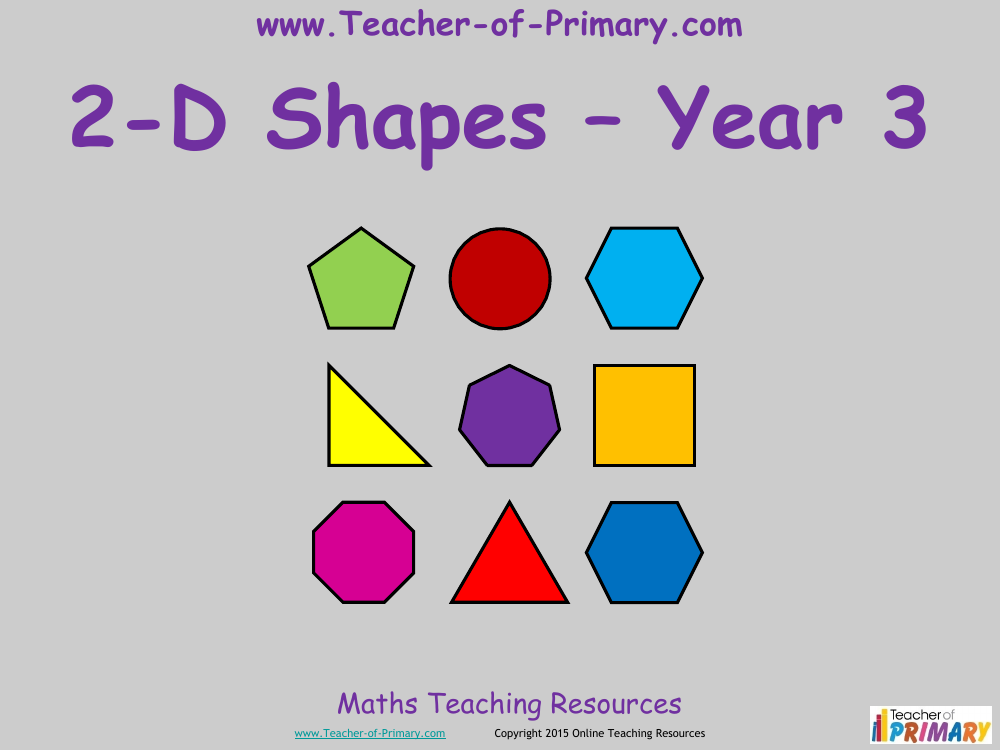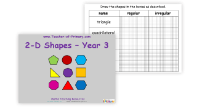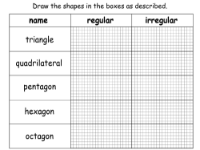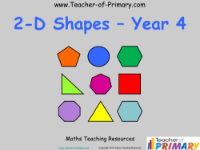2-D Shapes - PowerPoint

Maths Resource Description
In an engaging mathematical journey for Year 3 students, a PowerPoint presentation delves into the world of 2-D shapes. The aim of the session is to practice recognising and drawing two-dimensional shapes, with a particular emphasis on accurately describing their properties, including the lengths of lines and the angles. The term '2-D shape' refers to a flat, two-dimensional figure, which means it has length and width but no thickness, distinguishing it from a 3-D object that also has thickness. Students are introduced to polygons, which are 2-D shapes with straight sides, and the session categorises them into two groups: regular polygons, with equal sides and angles, and irregular polygons, where sides and angles are not all the same.
The presentation further explores specific types of polygons and quadrilaterals. Regular polygons such as pentagons, hexagons, and octagons, are shown with all sides and angles equal, whereas their irregular counterparts have unequal sides and angles. Quadrilaterals are defined as four-sided polygons and can include familiar shapes like squares, which are regular polygons with four equal sides and right angles, and rectangles, which are irregular polygons with only opposite sides being equal. Additionally, the concept of triangles is introduced, highlighting the differences between equilateral, right-angled, and isosceles triangles, based on the lengths of their sides and angles. The interactive element of the presentation invites students to sort shapes into the correct groups and guess the names of shapes based on their descriptions. The lesson concludes with a hands-on activity where students are encouraged to draw the discussed shapes and even attempt to create them by folding paper, fostering a practical understanding of geometric concepts.



